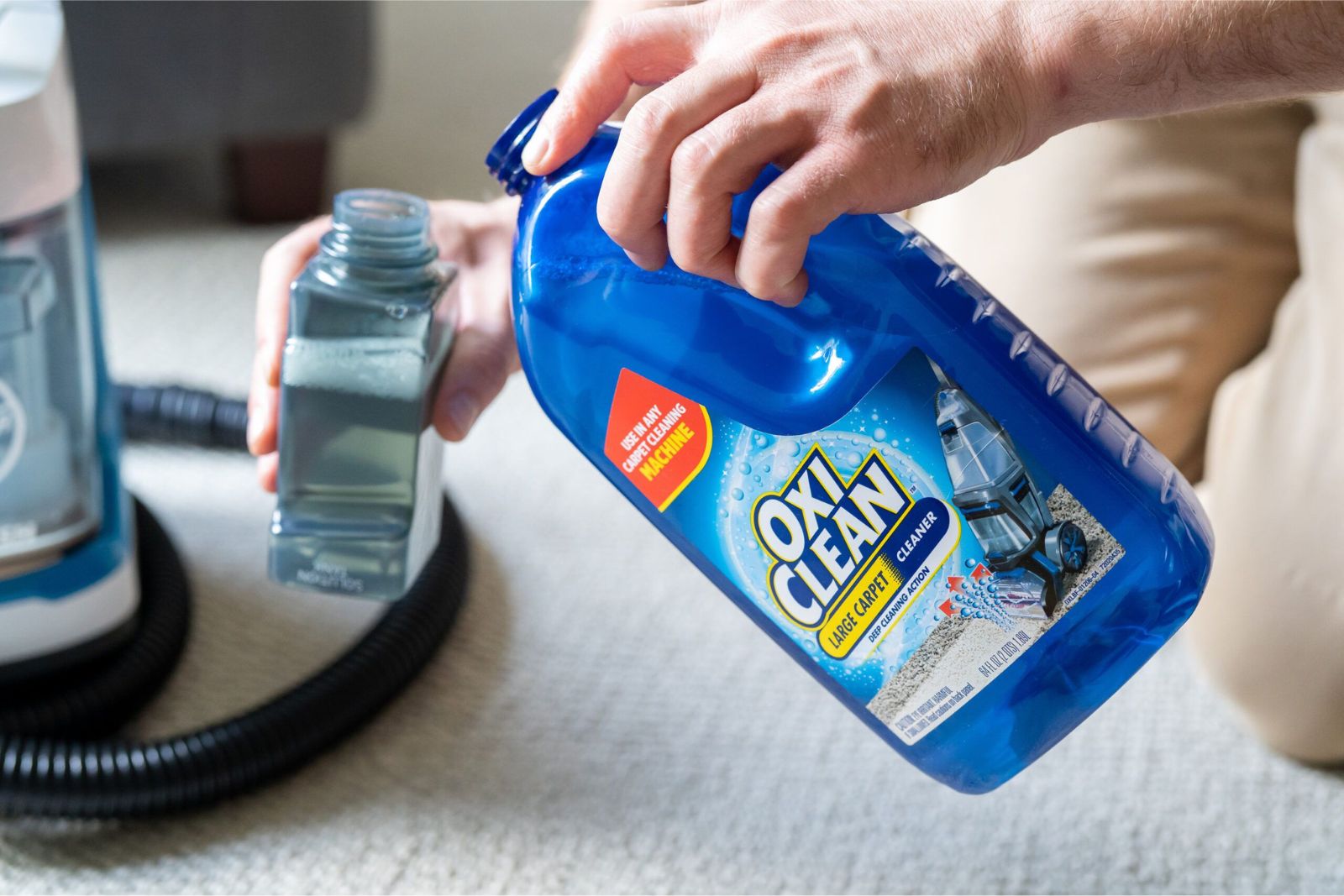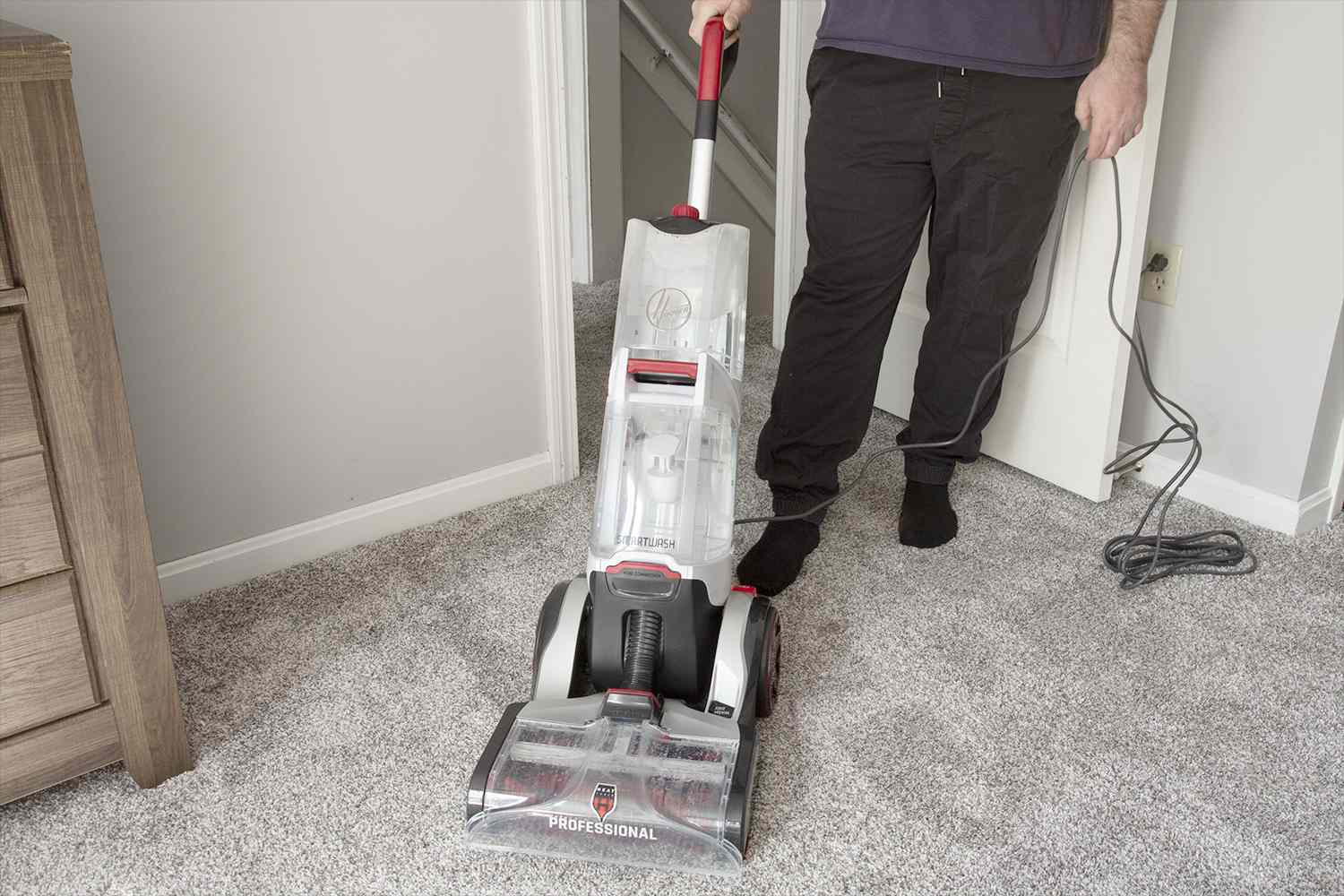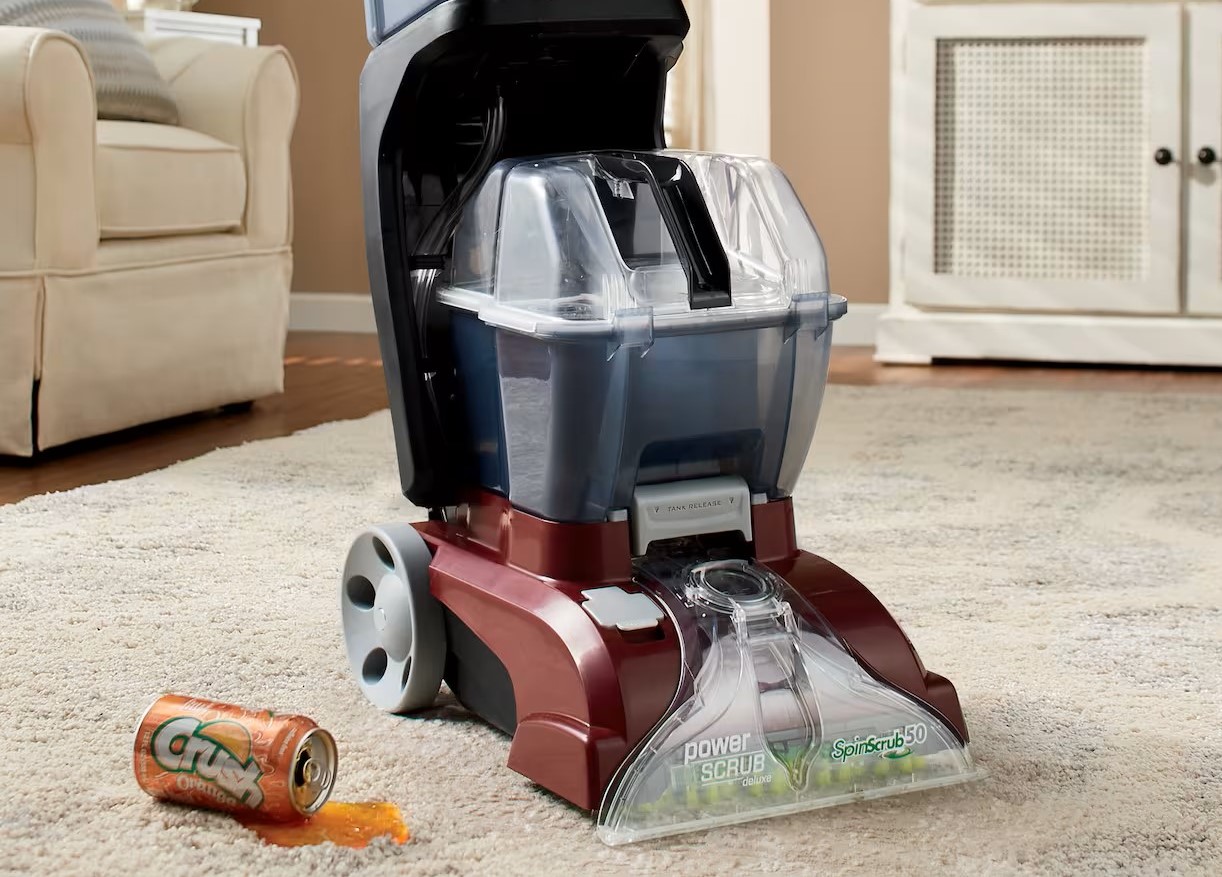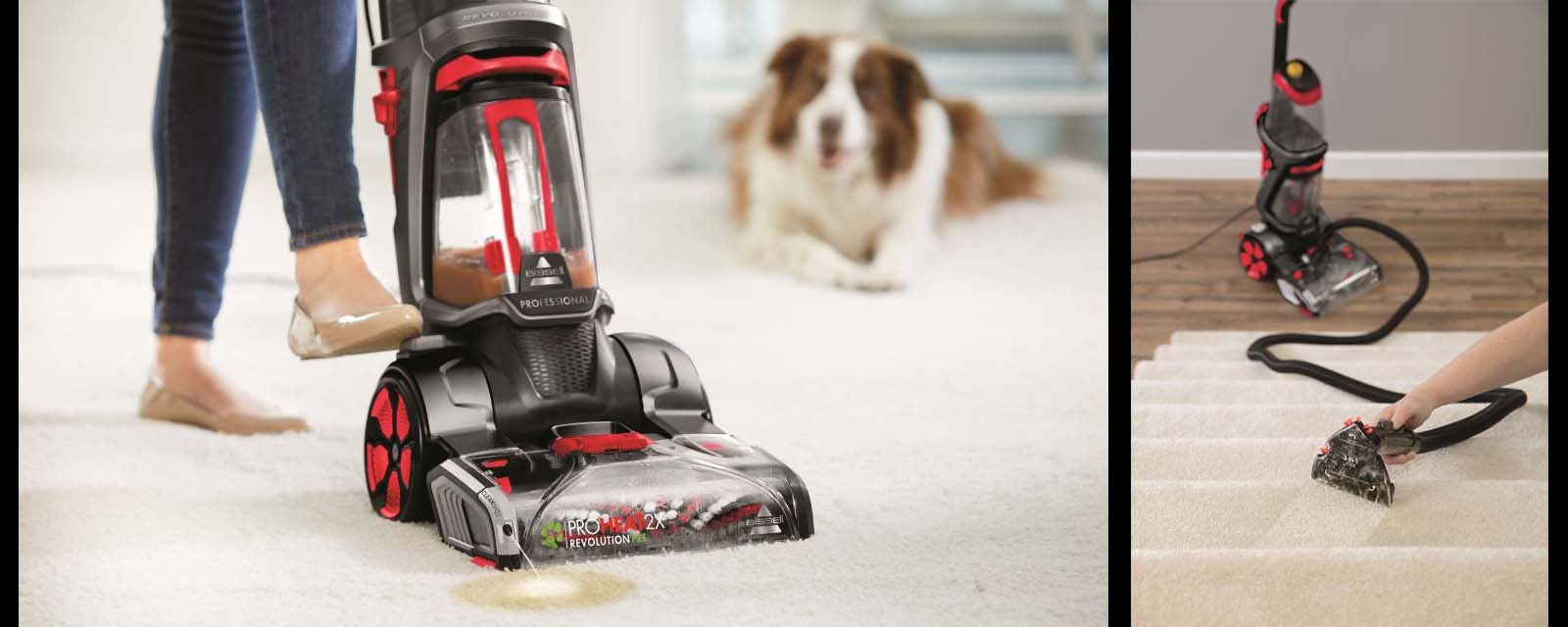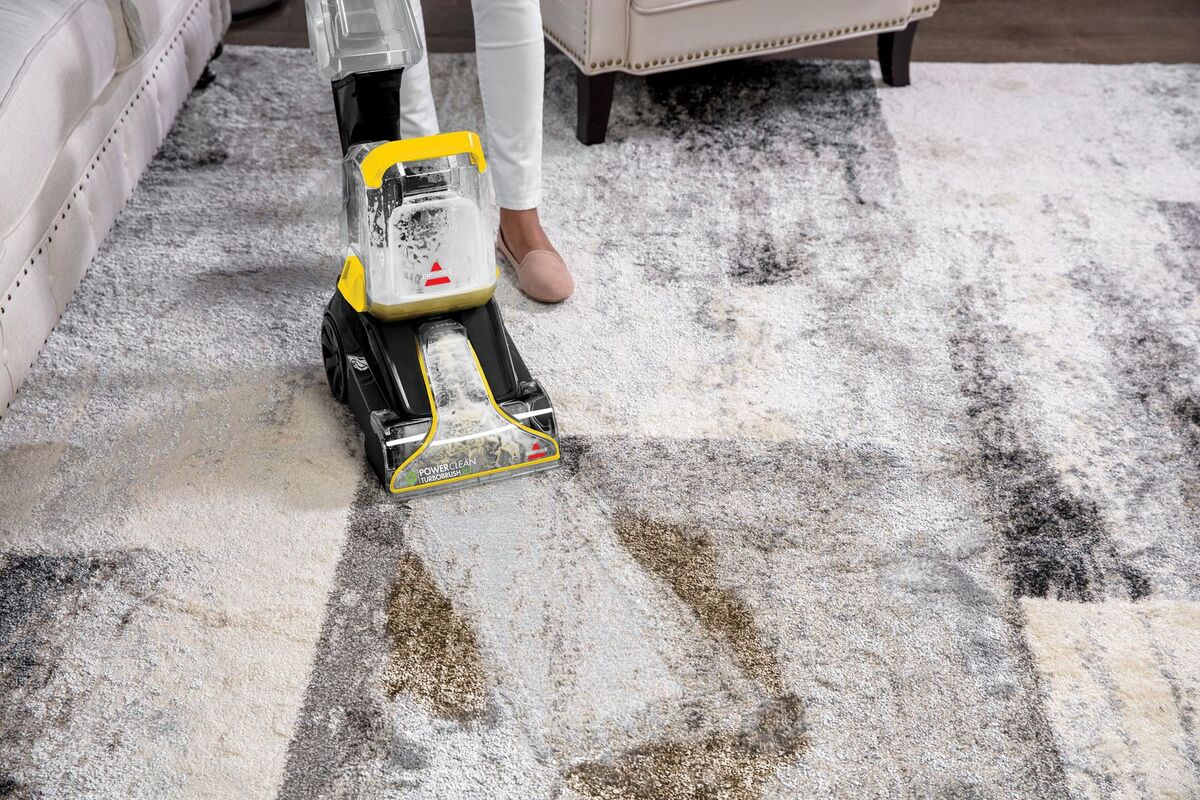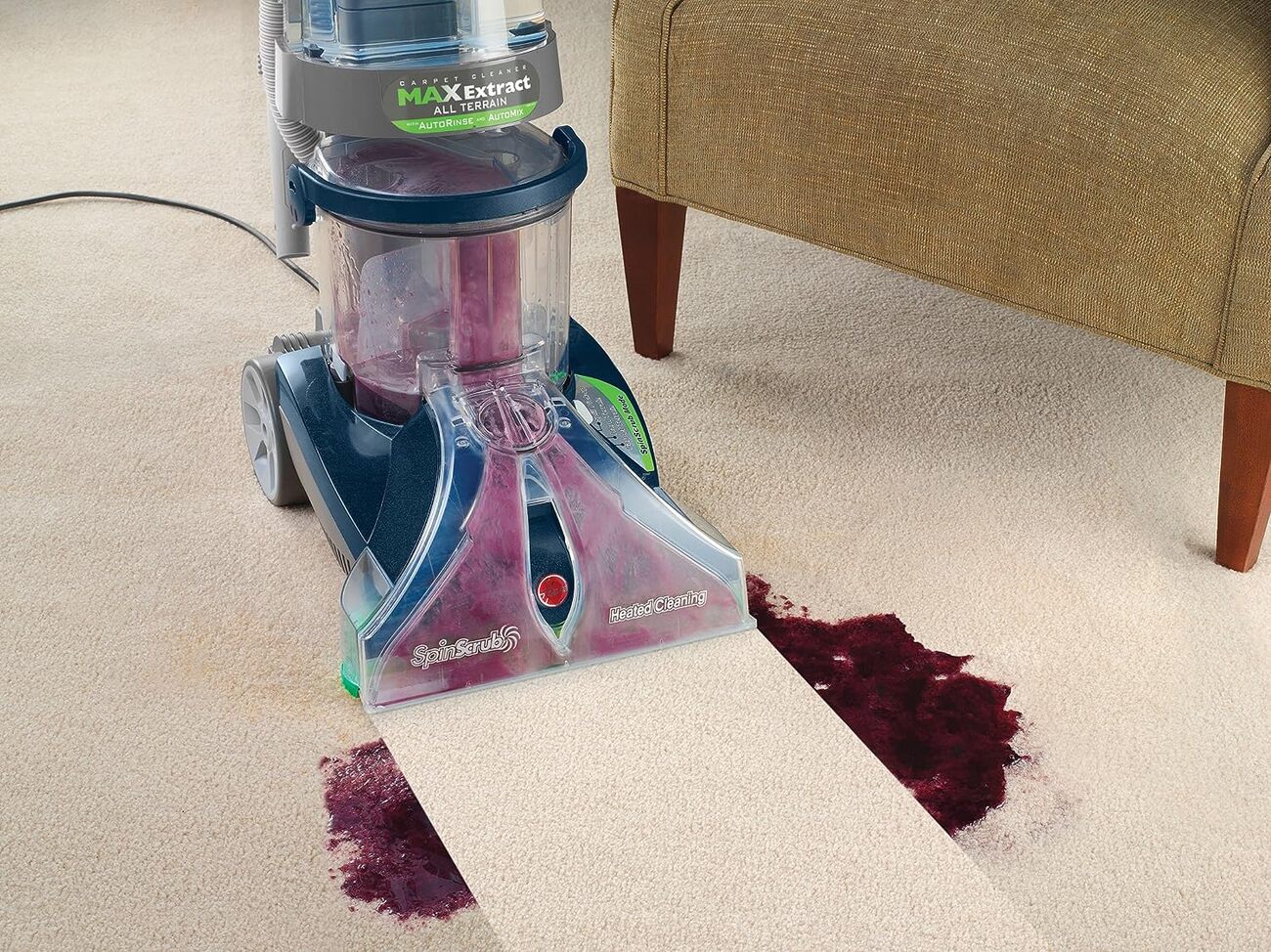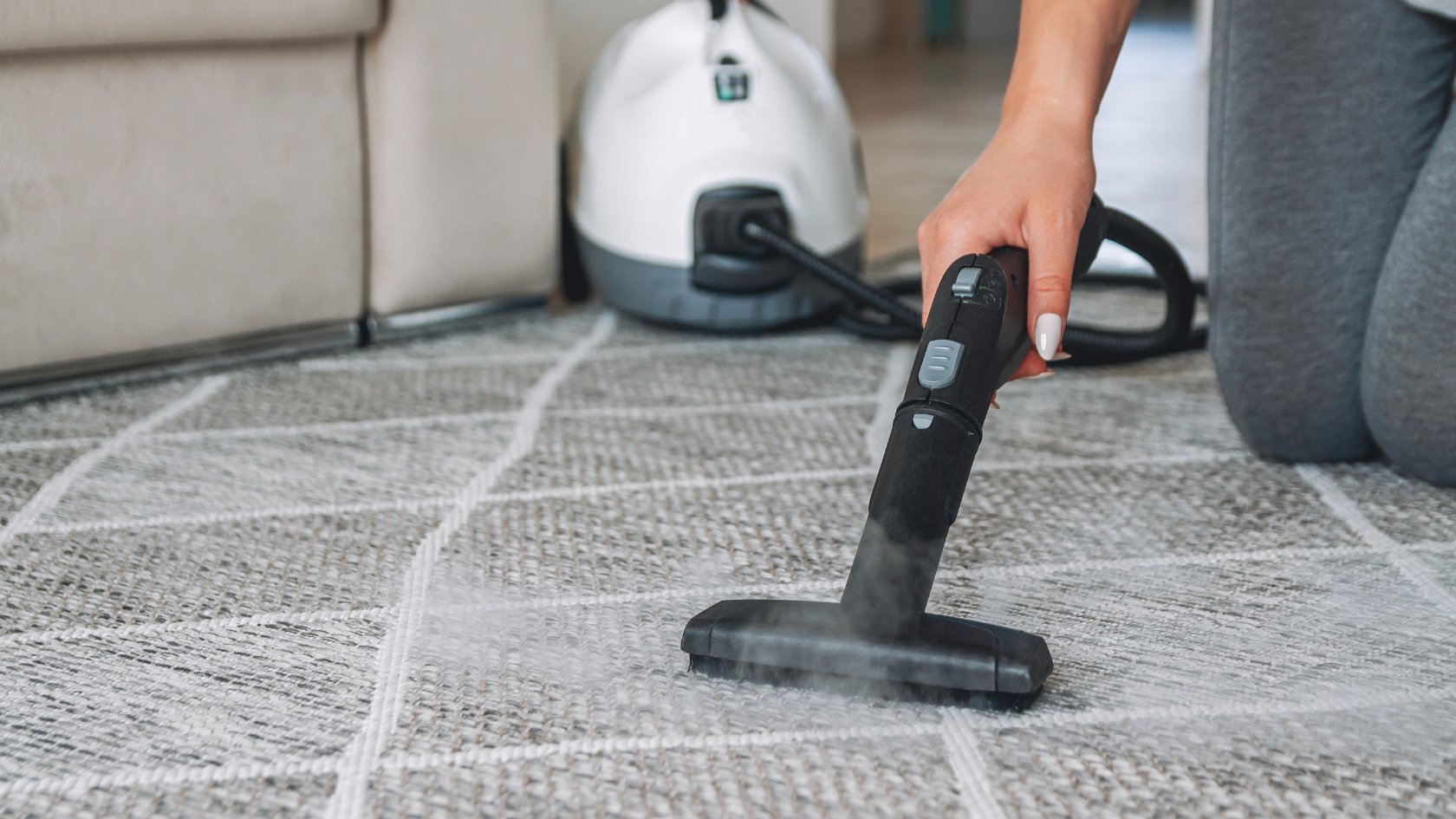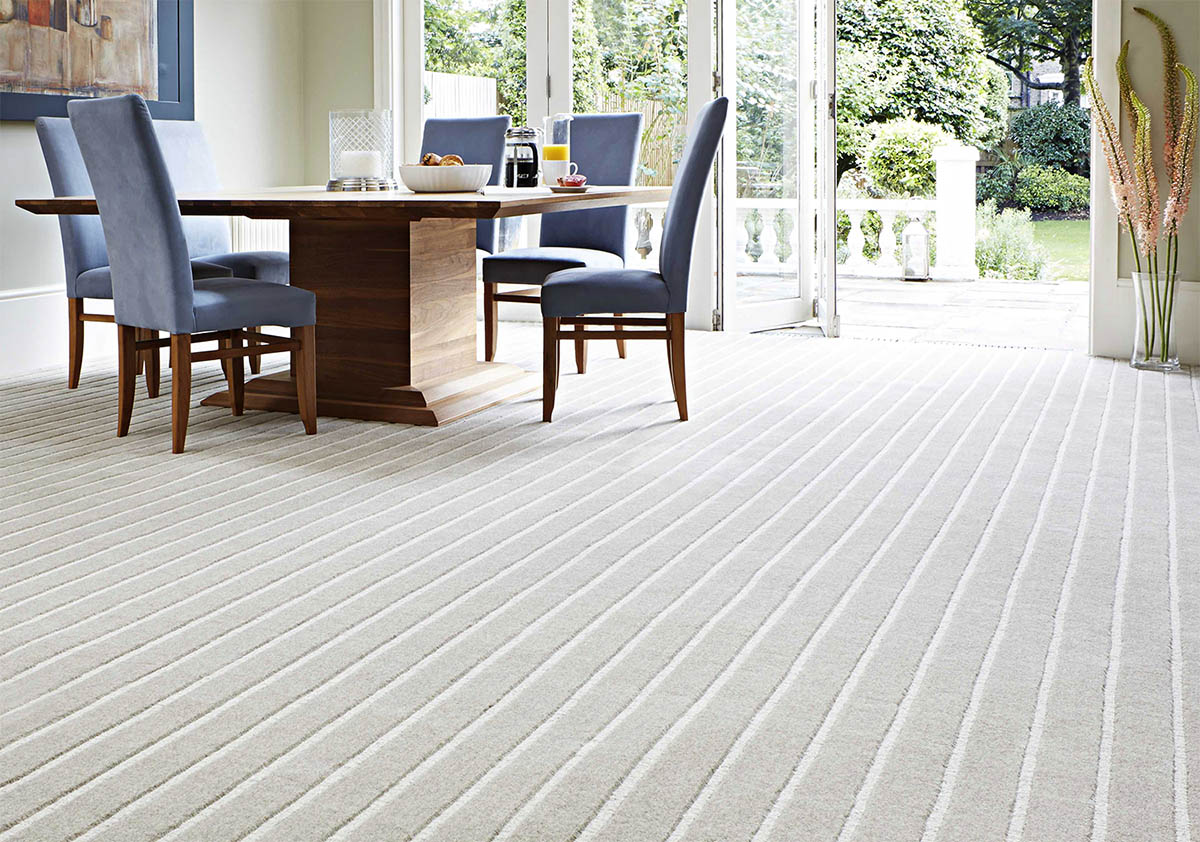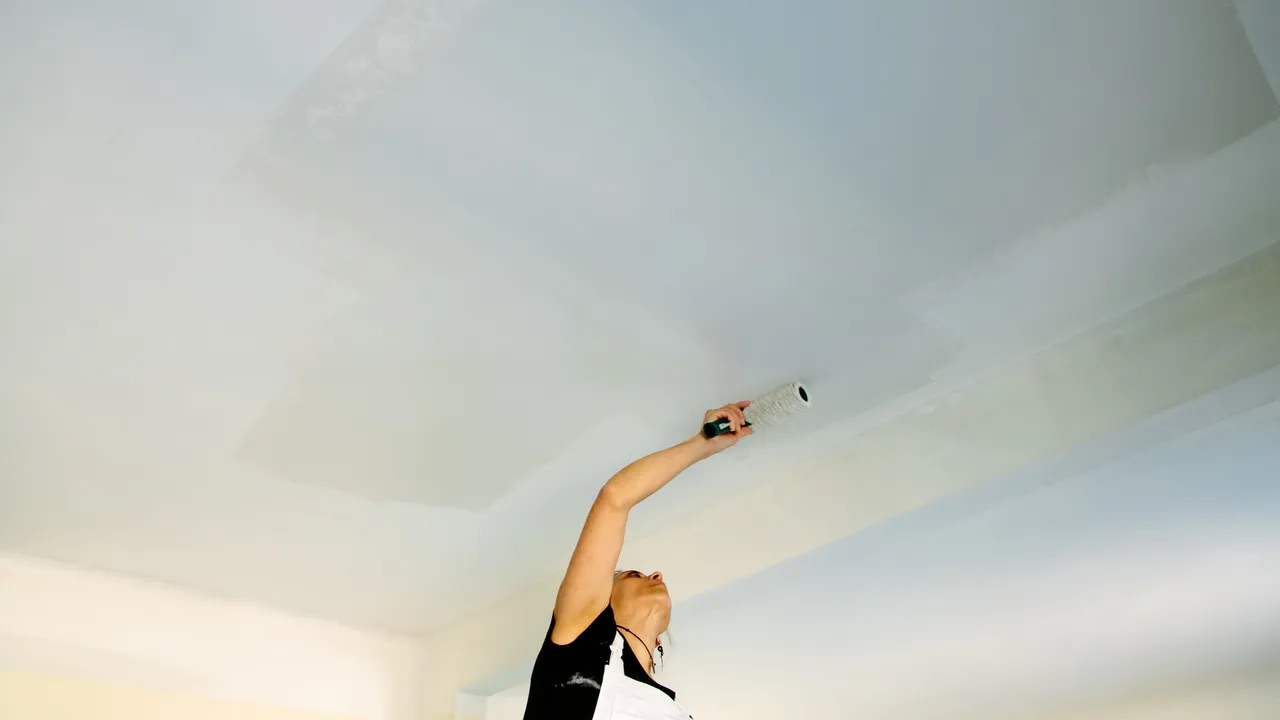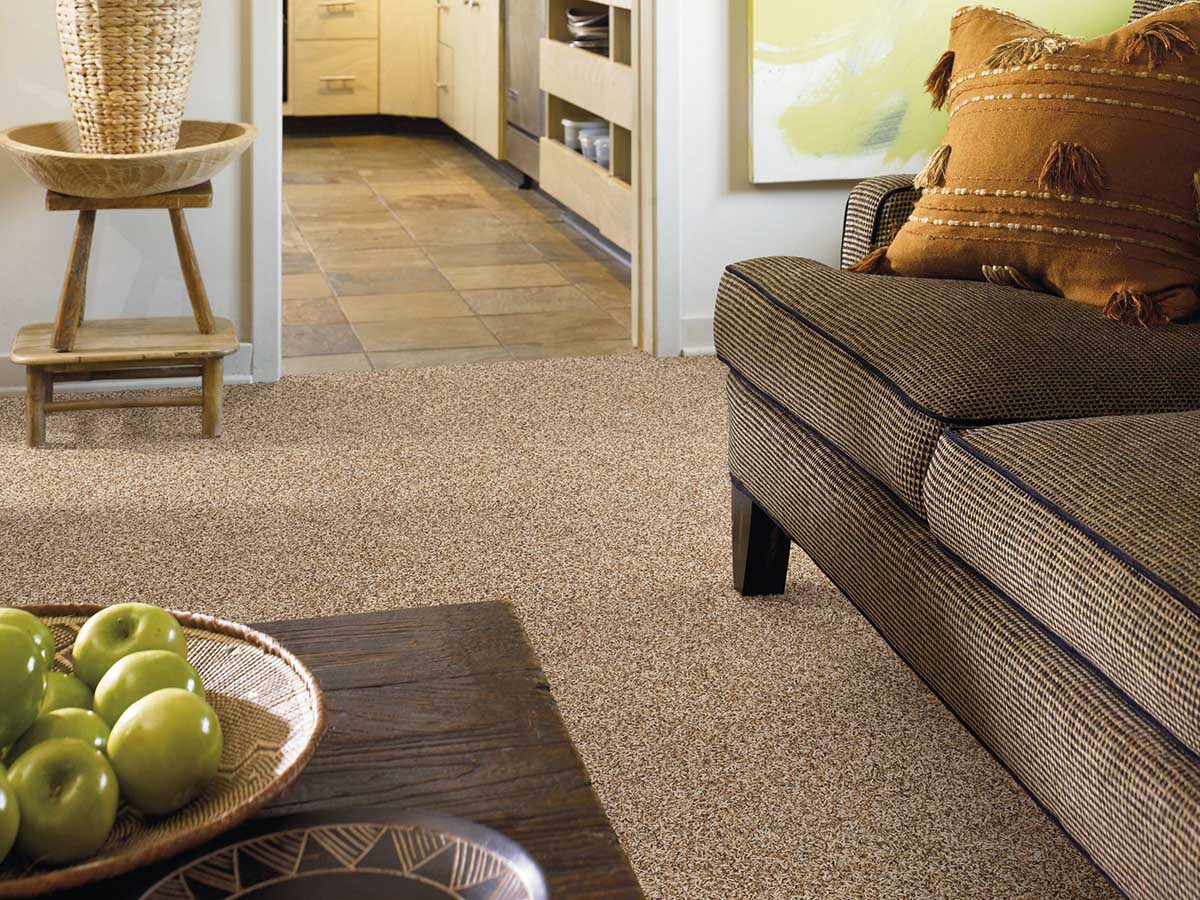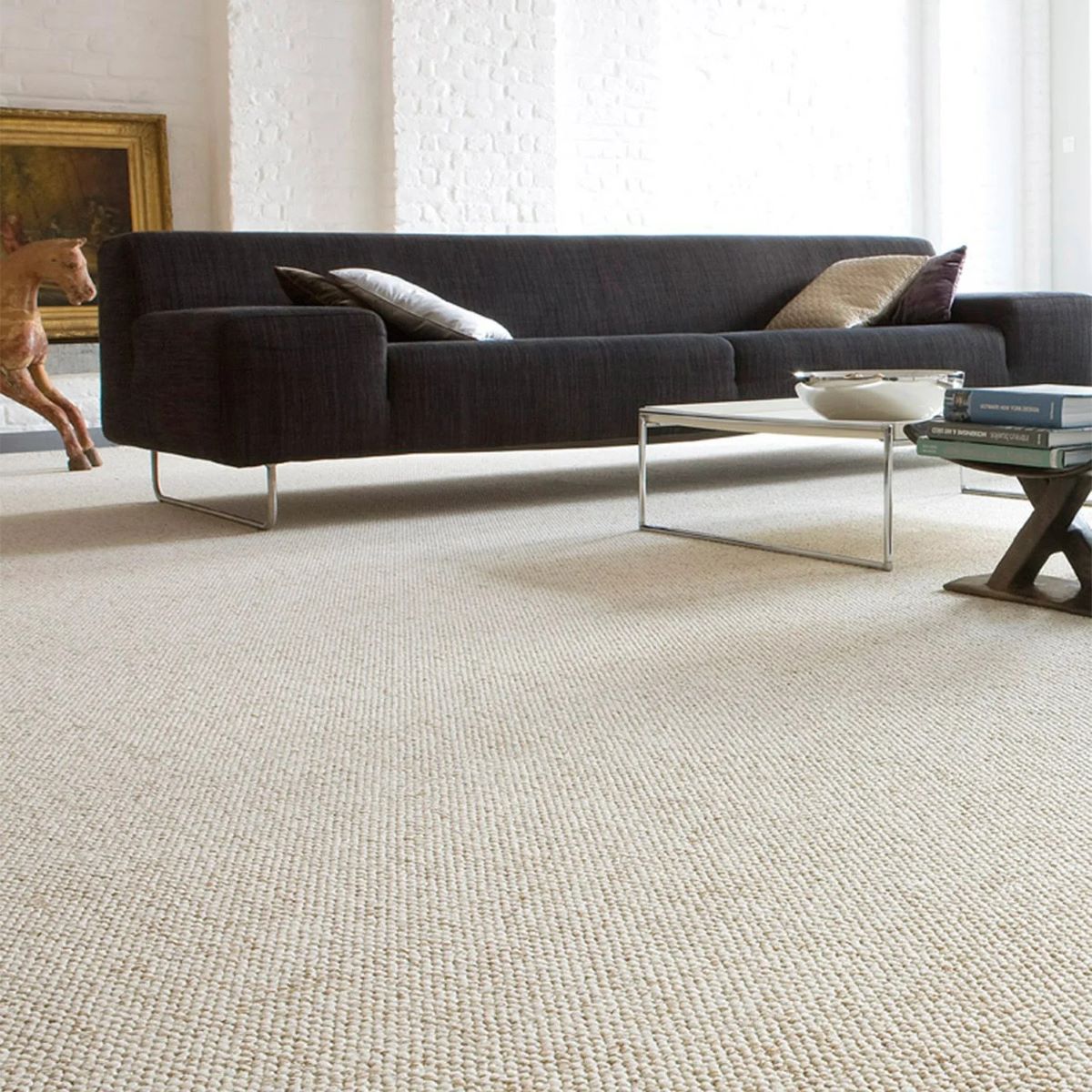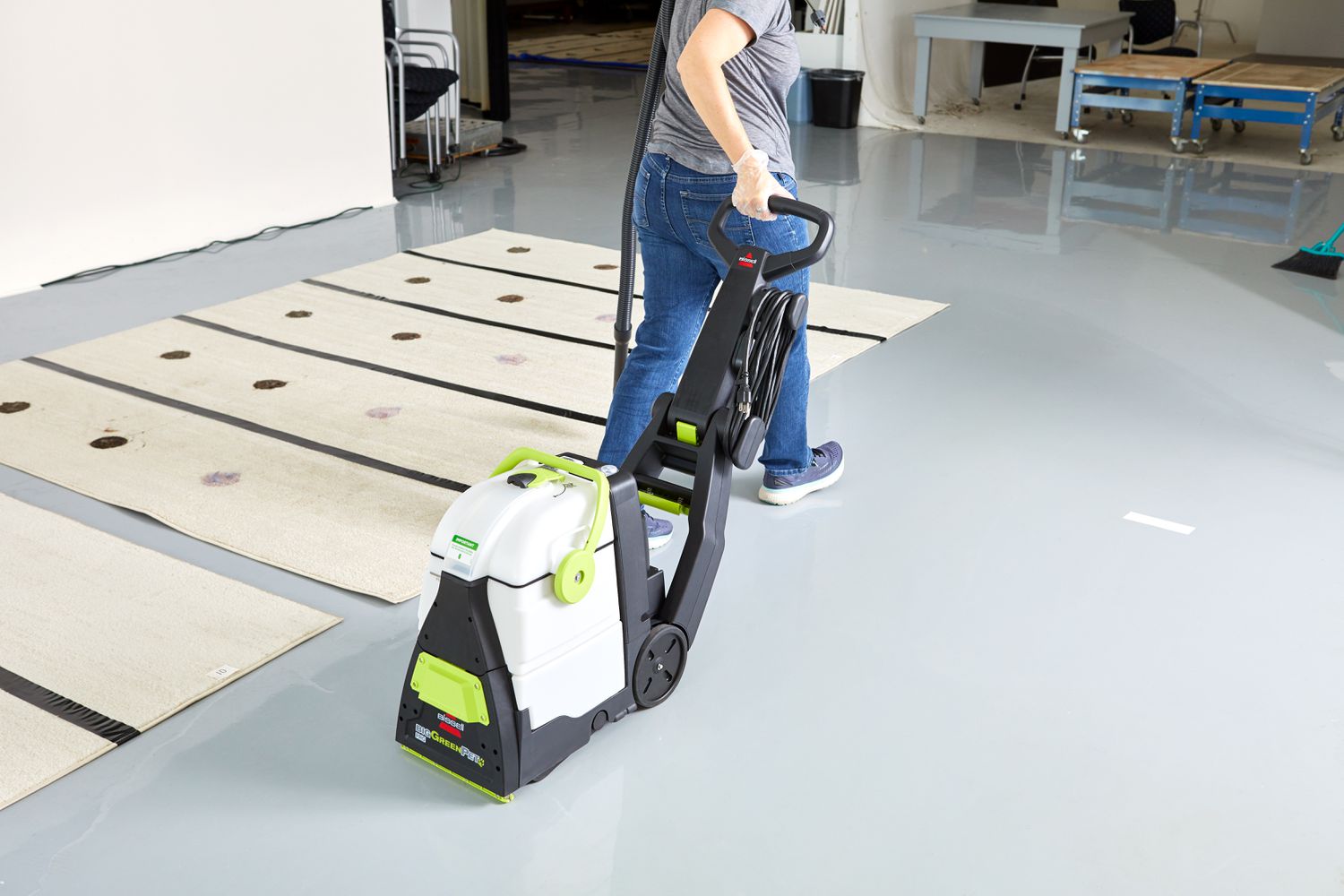

Articles
What Is A Carpet Shampooer
Modified: August 28, 2024
Discover the benefits and uses of carpet shampooers in our informative articles. Learn how to choose the right one for your cleaning needs and keep your carpets fresh and clean.
(Many of the links in this article redirect to a specific reviewed product. Your purchase of these products through affiliate links helps to generate commission for Storables.com, at no extra cost. Learn more)
Introduction
A carpet shampooer is a powerful cleaning tool specifically designed to deep clean and sanitize carpets. It is a popular choice for homeowners and businesses alike, as it effectively removes dirt, stains, and odors from carpets, leaving them fresh and restored. In this article, we will explore how carpet shampooers work, the different types available, the benefits of using them, and provide useful tips for using them effectively.
With regular use, carpets can accumulate dirt, dust, pet hair, allergens, and various stains that can diminish their appearance and affect indoor air quality. Vacuuming alone is not always enough to remove deeply embedded dirt and stains. That’s where carpet shampooers come in. They use a combination of water, cleaning solution, and powerful brushes or scrubbing mechanisms to agitate the carpet fibers and extract dirt, grime, and stains.
Carpet shampooers are available in different types, including upright, canister, and handheld models. Upright carpet shampooers are the most common and often have larger water tanks and wider cleaning paths, making them ideal for larger areas. Canister carpet shampooers offer more versatility and maneuverability, while handheld models are compact and perfect for spot cleaning or small areas.
Using a carpet shampooer has numerous benefits. Firstly, it helps to remove deeply embedded dirt, allergens, and stains that can’t be easily eliminated by vacuuming alone. This can improve indoor air quality and create a healthier living environment, especially for those with allergies or respiratory issues.
Additionally, carpet shampooers can help to revive the appearance of carpets, making them look and feel cleaner and fresher. They can remove tough stains, such as pet stains or wine spills, and eliminate unpleasant odors that may linger in the carpet fibers.
To effectively use a carpet shampooer, certain steps should be followed. First, it is important to vacuum the carpet thoroughly to remove loose dirt and debris. Next, the carpet should be pre-treated with a carpet cleaning solution to tackle stubborn stains.
The carpet shampooer is then filled with a mixture of hot water and cleaning solution, and the machine is used to spray the solution onto the carpet while simultaneously agitating the fibers. The powerful brushes or scrubbing mechanisms of the carpet shampooer help to loosen dirt and stains, while the suction function extracts the dirty water and excess moisture from the carpet.
After completing the cleaning process, it is important to allow the carpet to dry fully. Opening windows, using fans, or utilizing air movers can help speed up the drying process. It is recommended to avoid walking on the carpet until it is completely dry to prevent any re-soiling or damage to the freshly cleaned fibers.
Key Takeaways:
- Carpet shampooers are powerful tools that effectively remove dirt, stains, and odors from carpets, improving indoor air quality and reviving the appearance of carpets. Proper maintenance and usage can prolong the life of both the machine and the carpets.
- Understanding the different types of carpet shampooers and their features is crucial for choosing the right one for specific cleaning needs. Avoiding common mistakes, such as over-wetting the carpet and rushing the cleaning process, ensures optimal results and prevents potential damage.
Read more: What Is A Carpet Steamer
How Does a Carpet Shampooer Work?
A carpet shampooer works by combining water, cleaning solution, and mechanical action to deep clean carpets. The process typically involves several key components that work together to effectively remove dirt, stains, and odors from your carpets.
Firstly, the carpet shampooer is equipped with a water tank where hot water is stored. This water is then mixed with a carpet cleaning solution, which helps to break down and loosen dirt and stains from the carpet fibers.
Once the water and cleaning solution are mixed, the carpet shampooer will spray this mixture onto the carpet using a nozzle or spray jets. The solution is evenly distributed over the carpet, ensuring that all areas receive the necessary cleaning treatment.
As the cleaning solution is applied to the carpet, the carpet shampooer employs mechanical action to agitate the fibers. This is typically done through the use of rotating brushes or scrubbing mechanisms. These brushes or mechanisms work to loosen and dislodge dirt, stains, and debris from deep within the carpet fibers.
The agitating action of the brushes or scrubbing mechanisms helps to break apart dirt particles and lift them to the surface of the carpet. This allows for easier extraction during the cleaning process.
Alongside the brushing or scrubbing action, the carpet shampooer also utilizes a suction mechanism. This mechanism helps to extract the dirty water and excess moisture from the carpet as the cleaning process progresses.
The suction function of the carpet shampooer acts like a vacuum, drawing in the dirty water and simultaneously removing it from the carpet. This ensures that the dirt, stains, and cleaning solution are effectively removed from the carpet, leaving it clean and fresh.
Throughout the cleaning process, the dirty water is collected in a separate tank or reservoir within the carpet shampooer. This tank can be easily emptied and cleaned after the carpet cleaning is completed.
Some carpet shampooers also offer additional features and functionalities. These can include heat settings to maintain the temperature of the water, adjustable brush or scrubbing speeds for different carpet types, and attachments or accessories for spot cleaning or reaching difficult areas.
In summary, a carpet shampooer works by combining water, cleaning solution, and mechanical action to thoroughly clean carpets. The water and cleaning solution are evenly distributed over the carpet, the brushes or scrubbing mechanisms agitate the fibers to loosen dirt and stains, and the suction function extracts the dirty water from the carpet. This process leaves your carpets fresh, clean, and revitalized.
Different Types of Carpet Shampooers
When it comes to carpet shampooers, there are several different types available on the market. Each type offers its own set of features, advantages, and limitations. Understanding the different types can help you choose the right carpet shampooer for your specific needs. Here are the main types of carpet shampooers:
- Upright Carpet Shampooers: Upright carpet shampooers are the most common type and are often preferred for larger cleaning tasks. They are designed with a body that stands upright and typically have a larger water tank and wider cleaning path. Upright carpet shampooers often come with powerful brushes or scrubbing mechanisms that can effectively remove dirt and stains from carpets. They are easy to maneuver and offer efficient cleaning for larger carpeted areas.
- Canister Carpet Shampooers: Canister carpet shampooers consist of a separate unit for the cleaning solution and a wand or hose with attachments for cleaning. They are versatile and offer more maneuverability, making them suitable for cleaning stairs, upholstery, and hard-to-reach areas. Canister carpet shampooers are often smaller and more lightweight than upright models, making them easier to maneuver and store.
- Handheld Carpet Shampooers: Handheld carpet shampooers are compact and lightweight devices that are perfect for spot cleaning and small areas. They are easy to use and allow for precise targeting of stains and spills. Handheld carpet shampooers are ideal for quick clean-ups and can be a convenient addition to your cleaning routine.
When choosing a carpet shampooer, consider factors such as the size of the area you need to clean, the type of carpet you have, and your specific cleaning needs. Upright carpet shampooers are well-suited for larger areas, while canister and handheld models offer more versatility and maneuverability.
Additionally, it’s important to pay attention to the capacity of the water tank, the power and effectiveness of the brushes or scrubbing mechanisms, the suction power, and the availability of attachments or accessories for specialized cleaning tasks.
Take your time to research and compare different models to find the carpet shampooer that best fits your needs and budget. Reading customer reviews and feedback can also provide valuable insights to help you make an informed decision.
Remember, investing in a high-quality carpet shampooer can save you time and money in the long run, as it will effectively clean and maintain your carpets, prolonging their lifespan and keeping them looking and feeling fresh.
Benefits of Using a Carpet Shampooer
Using a carpet shampooer can provide a multitude of benefits for both homeowners and businesses. Let’s explore some of the key advantages of incorporating a carpet shampooer into your cleaning routine:
- Deep Cleaning: One of the main benefits of using a carpet shampooer is its ability to provide deep cleaning. Vacuuming alone cannot remove dirt, dust, allergens, and stains that have become deeply embedded in the carpet fibers. A carpet shampooer, with its combination of water, cleaning solution, and mechanical action, can effectively penetrate the carpet and remove even the toughest dirt and stains, leaving your carpets fresh and revitalized.
- Improved Indoor Air Quality: Carpets can act as a magnet for allergens, dust mites, pet dander, and other airborne pollutants. Regular use of a carpet shampooer can help improve indoor air quality by eliminating these allergens and pollutants from the carpet fibers. This is especially beneficial for individuals with allergies, asthma, or respiratory issues.
- Stain Removal: Carpets are prone to various stains, including those caused by food and drink spills, pet accidents, and everyday wear and tear. A carpet shampooer is specifically designed to target and remove these stains effectively. By tackling stains promptly with a carpet shampooer, you can prevent them from setting in and permanently damaging your carpets.
- Elimination of Odors: Over time, carpets can develop unpleasant odors due to spills, pet accidents, or the accumulation of dirt and bacteria. A carpet shampooer can help eliminate these odors by thoroughly cleaning the carpet fibers and removing the source of the odor. Regular use of a carpet shampooer can leave your carpets smelling fresh and clean.
- Revived Appearance: Carpets can become dull and worn-looking over time, especially in high-traffic areas. Using a carpet shampooer can help revive the appearance of your carpets by removing dirt, stains, and embedded debris. The mechanical action of the carpet shampooer’s brushes or scrubbing mechanisms can restore the texture and fluffiness of the carpet fibers, making them look and feel like new.
By investing in a carpet shampooer, you can enjoy these benefits and maintain the overall cleanliness and hygiene of your carpets. Regular use of a carpet shampooer can prolong the lifespan of your carpets, saving you money in the long run as you won’t need to replace them as frequently.
It’s important to select a high-quality carpet shampooer that suits your specific needs. Consider factors such as the size and type of your carpets, the features and functionalities offered by the carpet shampooer, and your budget. With proper maintenance and regular use, a carpet shampooer can be a valuable tool in keeping your carpets clean, fresh, and inviting.
Steps to Shampooing Your Carpet
Shampooing your carpet with a carpet shampooer is a relatively straightforward process. By following the proper steps, you can ensure effective cleaning of your carpets. Here are the steps to shampooing your carpet:
- Vacuum thoroughly: Before shampooing, it’s important to remove loose dirt and debris from the carpet by thoroughly vacuuming it. Use a quality vacuum cleaner to ensure that you pick up as much dirt as possible. Pay special attention to high-traffic areas and remove any visible dust or particles.
- Pre-treat stains: Prior to shampooing, it’s a good idea to pre-treat any stubborn stains or heavily soiled areas. You can use a carpet stain remover or a mixture of water and mild detergent. Apply the pre-treatment solution to the stains and let it sit for a few minutes to loosen the dirt and stain particles.
- Prepare the carpet shampooer: Once the pre-treatment has had time to work, it’s time to prepare the carpet shampooer. Start by filling the water tank with hot water according to the manufacturer’s instructions. Add the appropriate amount of carpet cleaning solution to the water tank. Be sure to use a cleaning solution specifically designed for use with carpet shampooers.
- Start shampooing: Begin the shampooing process by turning on the carpet shampooer and starting in a corner of the room. Slowly push the machine forward while simultaneously squeezing the trigger to release the cleaning solution onto the carpet. Use a steady and overlapping motion to ensure thorough coverage of the carpet.
- Agitate the carpet: The carpet shampooer will have brushes or scrubbing mechanisms that agitate the carpet fibers, loosening dirt and stains. Allow the machine to agitate the carpet for a few seconds before moving on to the next section. The agitation process helps to dislodge dirt particles and lift them to the surface.
- Extract the dirty water: After agitating the carpet, the carpet shampooer will also have a suction function to extract the dirty water and excess moisture from the carpet. Slowly pull the machine back over the just-shampooed area without squeezing the trigger. This will allow the machine to effectively remove the dirty water. Repeat this process until the water being extracted appears clear.
- Continue shampooing: Move systematically across the room, working in small sections at a time. Remember to overlap each pass to ensure complete coverage. Refill the water tank and add more cleaning solution as needed throughout the process.
- Allow the carpet to dry: Once you have completed the shampooing process, it’s important to allow the carpet to dry fully before walking on it or replacing furniture. Drying times can vary depending on factors such as the carpet thickness, humidity, and air circulation. Open windows, use fans, or run air movers to expedite the drying process.
Properly shampooing your carpet can help remove deep-seated dirt, stains, and odors, leaving your carpets looking and feeling fresh. Follow these steps and refer to the specific instructions provided by the carpet shampooer manufacturer to achieve optimal results.
Always remember to clean and maintain your carpet shampooer after each use to ensure its longevity and continued effectiveness. Empty and clean the water and dirty water tanks, remove any debris from the brushes or scrubbing mechanisms, and wipe down the exterior of the machine.
When using a carpet shampooer, always start by thoroughly vacuuming the carpet to remove any loose dirt and debris. This will ensure a more effective and thorough cleaning process.
Read also: 13 Amazing Carpet Cleaning Machine for 2025
Tips for Using a Carpet Shampooer Effectively
Using a carpet shampooer effectively can help you achieve the best results and ensure a thorough and deep clean for your carpets. Here are some helpful tips to keep in mind when using a carpet shampooer:
- Read the instructions: Before using your carpet shampooer, carefully read and understand the manufacturer’s instructions. Familiarize yourself with the specific features, functions, and maintenance requirements of your machine. Following the instructions will help you operate the carpet shampooer effectively and avoid any potential issues.
- Prepare the area: Before you start shampooing, move any furniture or obstacles out of the way to ensure easy access to the entire carpeted area. This will allow you to work more efficiently and cover all areas without any hindrances.
- Test in an inconspicuous area: Before shampooing the entire carpet, it’s a good practice to test the cleaning solution on a small, inconspicuous area of the carpet. This will help ensure that the solution does not cause any color fading or damage to the carpet fibers.
- Use the appropriate amount of cleaning solution: It’s important to use the correct amount of cleaning solution according to the manufacturer’s instructions. Using too much can leave residue on the carpet, while using too little may not provide effective cleaning. Follow the recommended guidelines to achieve optimal results.
- Work in small sections: To ensure thorough cleaning, divide the carpet into smaller sections and work on one section at a time. This will help you concentrate on each area and make sure that all dirt and stains are properly targeted and removed.
- Overlap each pass: When moving the carpet shampooer, make sure to overlap each pass by a few inches. This ensures that you don’t miss any areas and allows for consistent cleaning across the entire carpet.
- Avoid over-wetting: Using too much water or cleaning solution can result in over-wetting the carpet, which can lead to longer drying times and potential damage to the carpet and underlying padding. Follow the recommended water-to-solution ratio and avoid saturating the carpet excessively.
- Allow ample drying time: After shampooing, make sure to allow sufficient drying time for the carpet. Proper airflow and ventilation can speed up the drying process. Avoid walking on the carpet until it is completely dry to prevent re-soiling or damage.
- Clean and maintain your carpet shampooer: After each use, thoroughly clean and maintain your carpet shampooer as per the manufacturer’s instructions. This includes emptying and cleaning the water tanks, removing any debris or clogs, and storing the machine in a clean and dry area.
By following these tips, you can use your carpet shampooer effectively and achieve the best possible results. Regular maintenance and proper usage will help prolong the life of your carpet shampooer and keep your carpets looking clean and fresh.
Common Mistakes to Avoid When Using a Carpet Shampooer
Using a carpet shampooer can greatly improve the cleanliness and appearance of your carpets. However, there are some common mistakes that many people make when using a carpet shampooer. Avoiding these mistakes will help ensure that you achieve the best results and prevent any potential damage to your carpets. Here are some common mistakes to avoid:
- Not vacuuming prior to shampooing: A common mistake is failing to vacuum the carpet thoroughly before using a carpet shampooer. Vacuuming helps remove loose dirt, dust, and debris, allowing the shampooer to focus on deep cleaning. Skipping this step can result in ineffective cleaning and may even cause dirt to become embedded further in the carpet fibers.
- Using too much cleaning solution: Using excessive amounts of cleaning solution can leave behind residue on the carpet. This residue can attract dirt and make the carpet appear dull and sticky. Follow the recommended measurements and guidelines provided by the manufacturer to ensure the proper dilution of the cleaning solution.
- Over-wetting the carpet: Over-wetting the carpet is another common mistake to avoid. When using a carpet shampooer, it’s important to use the appropriate amount of water and cleaning solution. Using too much liquid can lead to prolonged drying times, potential damage to the carpet padding, and the growth of mold or mildew. Follow the manufacturer’s instructions for the correct water-to-solution ratio.
- Rushing the cleaning process: Carpet shampooing requires time and patience. One common mistake is rushing through the cleaning process, making quick passes over the carpet and not allowing sufficient time for the cleaning solution to penetrate and effectively clean the fibers. Take your time, work in small sections, and ensure that the cleaning solution has enough time to interact with the dirt and stains before extraction.
- Not allowing enough drying time: Allowing the carpet to dry fully is crucial to prevent re-soiling and potential damage. One mistake to avoid is not allowing ample drying time after shampooing. Moisture trapped in the carpet can lead to the growth of mold or mildew and can cause unpleasant odors. Use fans, open windows, or employ air movers to facilitate proper airflow and speed up the drying process.
- Ignoring maintenance and cleaning: Proper maintenance and cleaning of your carpet shampooer are essential for its longevity and continued effectiveness. A common mistake is neglecting to clean and maintain the machine after each use. Empty and clean the water and dirty water tanks, rinse and clean the brushes or scrubbing mechanisms, and ensure that the machine is stored in a clean and dry area.
- Not testing the cleaning solution on a small area: It’s important to test the cleaning solution on a small, inconspicuous area of the carpet before applying it to the entire carpet. Some cleaning solutions may cause discoloration or damage to certain carpet types. By conducting a patch test, you can ensure that the solution is safe and effective for your specific carpet.
By avoiding these common mistakes and following proper techniques and guidelines, you can use your carpet shampooer effectively and achieve the best possible results. Regular maintenance and appropriate usage will help prolong the life of your carpet shampooer and keep your carpets clean and fresh.
Frequently Asked Questions about Carpet Shampooers
Carpet shampooers are popular tools for deep cleaning and revitalizing carpets. Here are answers to some frequently asked questions about carpet shampooers:
- What is a carpet shampooer?
- What types of carpet shampooers are available?
- How often should I use a carpet shampooer?
- Can I use any cleaning solution with a carpet shampooer?
- Can I use a carpet shampooer on all types of carpets?
- Do carpet shampooers remove stains?
- Can a carpet shampooer be used on upholstery or other surfaces?
- Can a carpet shampooer eliminate pet odors?
- Can I rent a carpet shampooer instead of buying one?
A carpet shampooer is a cleaning device specifically designed to deep clean carpets. It uses a combination of water, cleaning solution, and mechanical action to agitate the carpet fibers and remove dirt, stains, and odors.
There are several types of carpet shampooers available, including upright, canister, and handheld models. Upright carpet shampooers are the most common and ideal for larger areas. Canister carpet shampooers offer versatility, and handheld models are compact and suitable for spot cleaning.
The frequency of carpet shampooing depends on various factors, such as foot traffic, presence of pets, and overall cleanliness. As a general guideline, it is recommended to shampoo high-traffic areas every 6-12 months, while less-used areas can be shampooed annually.
It is important to use a cleaning solution specifically formulated for use with carpet shampooers. These solutions are designed to be safe and effective on carpets and will not damage or leave residue on the fibers. Using other cleaning solutions may lead to poor cleaning results and potential damage to the carpet.
Most types of carpets can be safely cleaned with a carpet shampooer. However, it is always recommended to check the manufacturer’s instructions or consult with a professional if you are unsure about the suitability of your carpet for shampooing.
Yes, carpet shampooers are effective in removing many types of stains. However, the success of stain removal depends on various factors, such as the age and type of stain, the carpet material, and the cleaning solution used. It is important to address stains promptly and follow the proper stain treatment methods for best results.
Some carpet shampooers come with attachments or accessories that allow them to be used on upholstery or other surfaces. However, it is important to check the manufacturer’s instructions and recommendations to ensure the machine is suitable for the specific surface before use.
Yes, carpet shampooers can be effective in removing pet odors from carpets. The combination of water, cleaning solution, and mechanical action helps to break down and remove the odor-causing substances. It is recommended to use a pet-specific cleaning solution, and for severe odor issues, it may be necessary to conduct multiple cleaning passes.
Yes, many home improvement stores and rental companies offer carpet shampooers for rent. Renting can be a cost-effective option, especially for occasional use or if you don’t have the storage space. However, owning your own carpet shampooer provides convenience and allows you to clean your carpets whenever needed.
These are just a few of the common questions related to carpet shampooers. If you have any specific concerns or questions, it is always best to consult the manufacturer’s instructions or seek advice from a professional.
Conclusion
A carpet shampooer is an invaluable tool for deep cleaning and maintaining the cleanliness of your carpets. By effectively removing dirt, stains, and odors, carpet shampooers can revive the appearance of your carpets and improve indoor air quality. Understanding how carpet shampooers work and following proper techniques will help you achieve the best results and prolong the life of your carpets.
When using a carpet shampooer, it is important to start by thoroughly vacuuming the carpet to remove loose dirt and debris. Pre-treating stains and using the appropriate amount of cleaning solution will help ensure effective cleaning. Working in small sections and overlapping each pass will guarantee coverage of all areas.
Proper maintenance and cleaning of your carpet shampooer after each use will ensure its longevity and continued effectiveness. Emptying and cleaning water tanks, removing debris from brushes or mechanisms, and storing the machine in a clean and dry area are essential practices.
Avoiding common mistakes such as not vacuuming prior to shampooing, using excessive cleaning solution or water, rushing the cleaning process, and not allowing adequate drying time will help you achieve optimal results while preventing potential damage to your carpets.
Lastly, understanding the different types of carpet shampooers and their features will help you choose the right one for your specific needs. Upright, canister, and handheld models offer different levels of versatility and suitability for various cleaning tasks.
In conclusion, incorporating a carpet shampooer into your cleaning routine can greatly enhance the cleanliness and appeal of your carpets. By following the proper steps, avoiding common mistakes, and maintaining your carpet shampooer, you can enjoy fresh, clean, and rejuvenated carpets for years to come.
Frequently Asked Questions about What Is A Carpet Shampooer
Was this page helpful?
At Storables.com, we guarantee accurate and reliable information. Our content, validated by Expert Board Contributors, is crafted following stringent Editorial Policies. We're committed to providing you with well-researched, expert-backed insights for all your informational needs.

